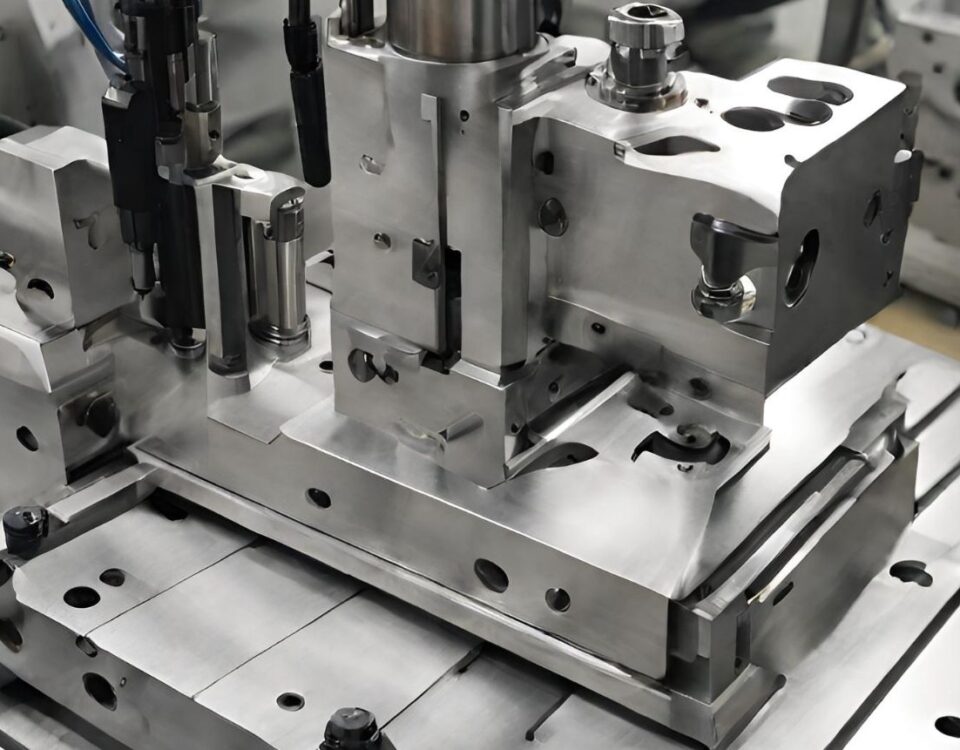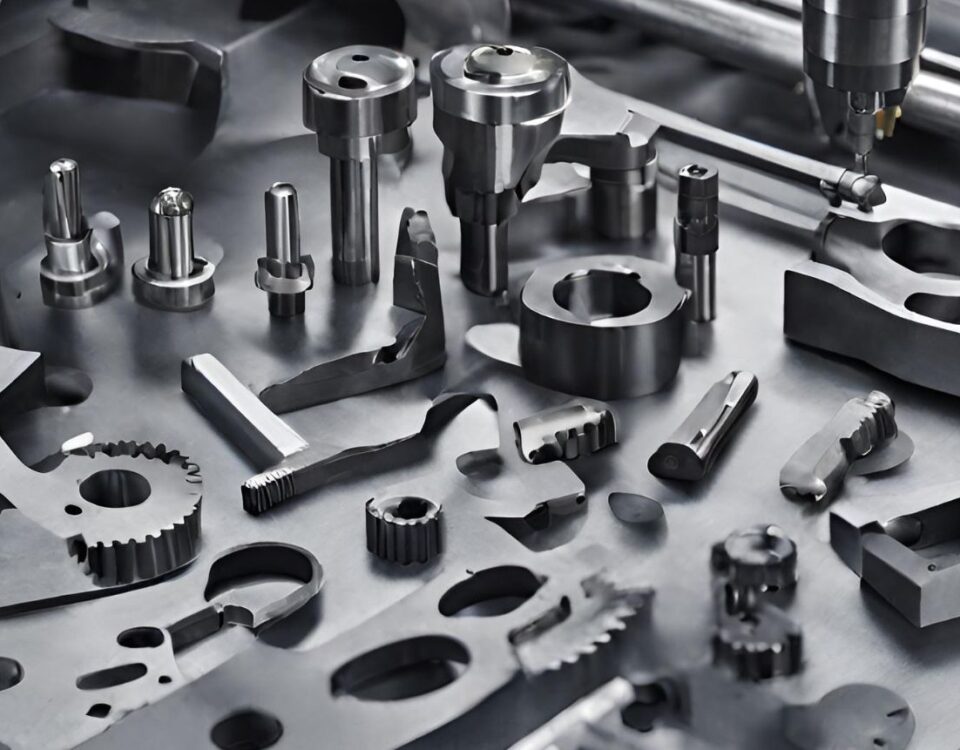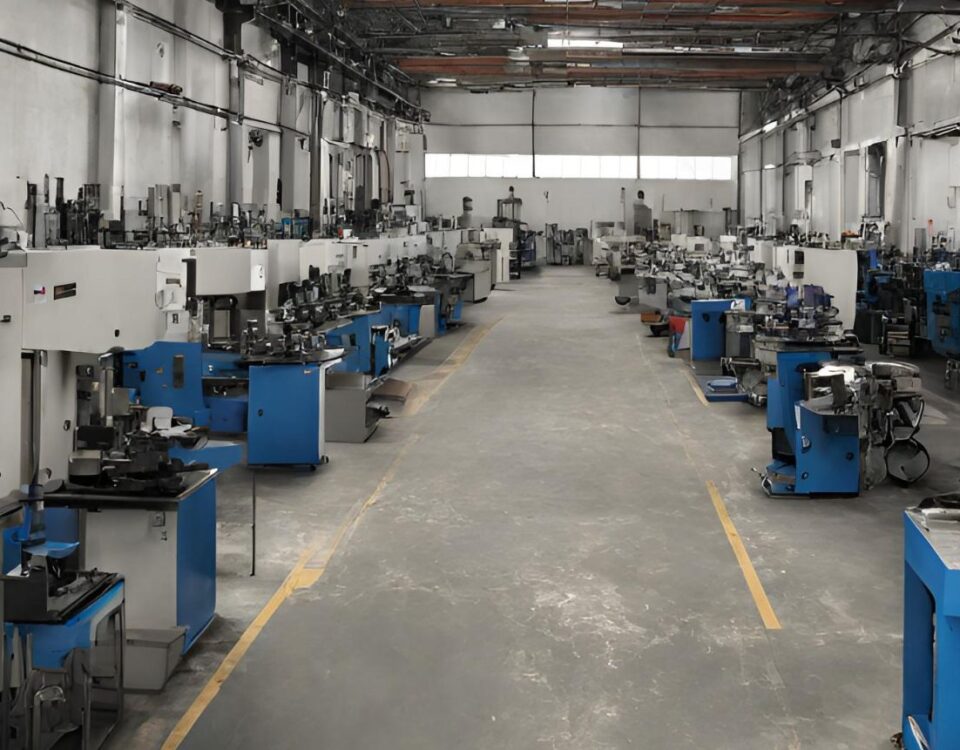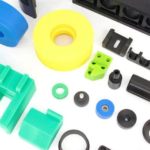
Ultimate Guide Plastic CNC Techniques and Services
8 November 2023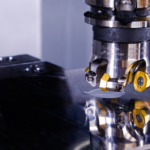
Meaning, Methods, Parts of CNC Machining
15 November 2023What is 5-Axis Machining?
Cutting instruments must be moved simultaneously in five axes during this process. To create complex parts, 5-axis CNC machines combine two rotational axes and three linear axes operating concurrently. This usually increases the tool spindly's tilt, which permits more rotation and movement of the worktable. Machinists can create up to five faces in a single operation with the use of a fifth axis. Because of this, the procedure is very accurate and efficient. It also means that it can be used to create intricate features and structures with little setup. This process is becoming more and more valuable for various industries because it requires consistent machining of five faces on several parts. Let's first go over what an axis count in CNC machining means to better understand the axes in a 5-axis CNC milling machine. The number of directions the cutting tool (or raw material) can move to produce the desired product is known as the machining axis count. Conventional CNC machines, for example, have three axes. Their cutting tools can therefore only be moved along the X, Y, and Z axes.
Through the moving and rotating of the worktable, 5-axis machining centers enhance the functionality of the linear axes. The A-axis and the C-axis are two additional rotational axes. The B-axis is the axis used for table rotation, and the A-axis is also known as the tilting table axis. Compared to 2- or 3-axis CNC machines, the inclusion of these axes enables the machining of more complex geometries. The axes' movement is summarized in the table below.
How Does 5-Axis CNC Machining Work?
In 5-axis CNC machining, the machine tool can move along five different axes simultaneously, allowing for complex and precise machining operations. Here's an overview of how 5-axis CNC machining works:
1. Coordinate System: The machine tool establishes a coordinate system, typically using the X, Y, and Z axes, to define the position and movement of the cutting tool relative to the workpiece.
2. Workpiece Setup: The workpiece is securely mounted to the machine table or fixture, ensuring stability during the machining process. Fixturing may include clamps, vises, or custom fixtures depending on the shape and size of the workpiece.
3. Tooling Selection: The appropriate cutting tools, such as end mills, drills, or specialized tools, are selected based on the specific machining requirements and material properties of the workpiece.
4. Toolpath Generation: A CAM (Computer-Aided Manufacturing) software is utilized to generate the toolpath. The software takes into account the design specifications, material properties, and machining operations required. It determines the optimal toolpath that the cutting tool will follow to create the desired shape and features.
5. Machine Setup: The machine operator enters the necessary parameters into the CNC control system, including the tooling information, cutting speeds, feed rates, and the specific axes to be used during machining.
6. Machining Operations: The CNC control system commands the machine tool to move along the designated axes, following the predetermined toolpath. The simultaneous movement of the five axes allows the cutting tool to approach the workpiece from various angles, achieving complex geometries and intricate shapes.
7. Cutting and Material Removal: As the machine tool moves, the cutting tool removes material from the workpiece based on the programmed toolpath. The cutting tool may rotate and tilt along the A and B axes to reach different surfaces and angles without the need for repositioning.
8. Continuous Monitoring: Throughout the machining process, the machine operator monitors the operation, ensuring that the machine is running smoothly, the cutting tool remains sharp, and any issues or anomalies are promptly addressed.
9. Finishing and Quality Control: Once the machining is complete, the workpiece is inspected for accuracy, dimensions, surface finish, and any other quality criteria specified in the design requirements. Additional finishing processes like deburring, polishing, or coating may be performed if necessary.
By utilizing the simultaneous movement of five axes, 5-axis CNC machining enables the production of complex and precise parts, reducing setup time, improving surface finish, and increasing efficiency compared to traditional 3-axis machining.
Types of 5-Axis CNC Machines
Your machining process can be improved and scalability increased with 5-axis machines. These machining centers can be found in a variety of forms to suit the needs of the manufacturing sector.
The three major types of 5-axis CNC machines are:
Head/Head
Rotational axes in head/head machines are found in the head. The workpiece is held in place by its 5-axis apex, which is mounted on a platform that slides across a stationary worktable. As a result, tool interference on the machine spindle head won't be a concern for you. They can produce large, heavy parts because of this increased likelihood of the apex moving around a workpiece. The machine table's ability to support large weights doesn't affect the rotational aces' accuracy. Nevertheless, these machines' rotary axes are limited in their movement by their design.
Head/Table
One rotational axis is located in the head and the other is in the rotary table in the head/table machine setup. Their rotating axis is located in the head and has a limited range. The rotary shaft, on the other hand, is found in the table and has a larger (unlimited) range. This configuration has the advantage of being able to rotate the workpiece indefinitely and consistently. It can only create a certain amount of parts, though. The workpiece is supported by the rotary axis, which explains this.
Tabel/Tabel
The rotary axes of the 5-axis machines are positioned inside the table in this configuration. As a result, the head stays stationary and all rotations take place on the table. These machines are appropriate for machining undercuts due to their design. Furthermore, machinists can easily see how the cuts will occur during the programming stage because the head does not rotate. Large or heavy components, however, are harder to machine with this setup. This restriction results from the table's incapacity to support excessive weight.
Advantages of 5-Axis CNC Machining
5-axis CNC machining offers several advantages over traditional 3-axis machining. Here are some key benefits:
1. Increased Flexibility: With 5-axis machining, the cutting tool can approach the workpiece from multiple angles and directions, allowing for machining operations on various surfaces without the need for repositioning or multiple setups. This flexibility enables the production of complex geometries and intricate shapes that would be challenging or impossible with 3-axis machining.
2. Improved Precision and Accuracy: The simultaneous movement of five axes in 5-axis machining allows for better control over the cutting tool's orientation and position. This precision and accuracy result in tighter tolerances, smoother surface finishes, and overall improved part quality.
3. Reduced Setup Time: 5-axis machining eliminates the need for frequent repositioning and setup changes. By accessing multiple sides and angles of the workpiece without re-clamping or re-fixturing, setup time is significantly reduced. This leads to increased productivity and cost savings.
4. Enhanced Efficiency: The ability to approach the workpiece from multiple angles and directions in a single setup enables faster machining cycles. Complex parts can be produced more efficiently, reducing production time and increasing overall throughput.
5. Reduced Tooling Requirements: 5-axis machining allows for the use of shorter and more rigid cutting tools. This reduces tool deflection and vibration, resulting in improved surface finish and prolonging tool life. Additionally, it eliminates the need for specialized tooling or custom fixtures that may be required for complex operations in traditional machining.
6. Versatile Machining Capabilities: 5-axis CNC machines can perform a wide range of machining operations, including milling, drilling, contouring, and even turning. This versatility allows for the production of diverse parts and components, eliminating the need for multiple machines and setups.
7. Improved Workflow and Design Freedom: 5-axis machining offers greater design freedom, allowing for more innovative and complex part designs. This flexibility in design translates into improved workflow, as it reduces the need for additional operations, assembly, or post-processing steps.
Overall, the advantages of 5-axis CNC machining include increased flexibility, improved precision, reduced setup time, enhanced efficiency, reduced tooling requirements, versatile capabilities, and improved design freedom. These advantages make 5-axis machining an ideal choice for industries that require complex and high-precision parts, such as aerospace, automotive, medical, and mold-making.
Disadvantages of 5-Axis CNC Machining
While 5-axis CNC machining offers numerous advantages, it also has some disadvantages that should be considered. Here are a few potential drawbacks:
1. Higher Cost: 5-axis CNC machines are generally more expensive than their 3-axis counterparts due to their increased complexity and capabilities. This higher cost can make them less accessible for small businesses or those with limited budgets.
2. Increased Complexity: Operating a 5-axis CNC machine requires more advanced programming and setup skills compared to 3-axis machines. The complexity of programming and machine operation may require additional training and expertise, potentially leading to longer setup times and a steeper learning curve.
3. Maintenance and Service: 5-axis CNC machines have more moving parts and axes, which may result in increased maintenance requirements. The additional complexity can make troubleshooting and servicing more challenging, potentially leading to higher maintenance costs and machine downtime.
4. Reduced Rigidity: The simultaneous movement of multiple axes in 5-axis machining can introduce additional forces and vibrations, potentially affecting the rigidity of the machine. This can impact the overall stability and accuracy of the machining process, requiring careful consideration of machine rigidity and appropriate cutting parameters.
5. Limited Workspace: 5-axis CNC machines often have a more compact workspace compared to their 3-axis counterparts. This limitation can restrict the size of workpieces that can be machined, requiring additional setups or alternative machining methods for larger parts.
6. Increased Programming Time: Generating toolpaths and programming for 5-axis machining can be more time-consuming and complex compared to 3-axis machining. The need to consider multiple axes and orientations adds complexity to the programming process, potentially increasing overall programming time.
7. Tool Accessibility: In certain cases, the simultaneous movement of multiple axes may limit access to certain areas of the workpiece. This can affect the tool's reach and may require additional tooling solutions or alternative machining approaches to overcome accessibility challenges.
Despite these potential disadvantages, 5-axis CNC machining remains a valuable and powerful technology, especially for industries that require complex and precise machining operations. By understanding these limitations and implementing appropriate strategies, businesses can effectively leverage the benefits of 5-axis machining while mitigating potential drawbacks.
Conclusion
5-axis CNC machining is an advanced manufacturing process that offers numerous benefits over traditional 3-axis machining. It involves the simultaneous movement of five axes, allowing for increased flexibility, improved precision, reduced setup time, enhanced efficiency, and versatile machining capabilities. With 5-axis machining, complex geometries and intricate shapes can be produced with ease, making it an ideal choice for industries that require high-precision and complex parts. However, it is essential to consider the potential disadvantages, such as higher cost, increased complexity, maintenance requirements, limited workspace, and increased programming time. By understanding these factors and implementing appropriate strategies, businesses can effectively utilize 5-axis CNC machining to achieve superior part quality, increased productivity, and design freedom.


